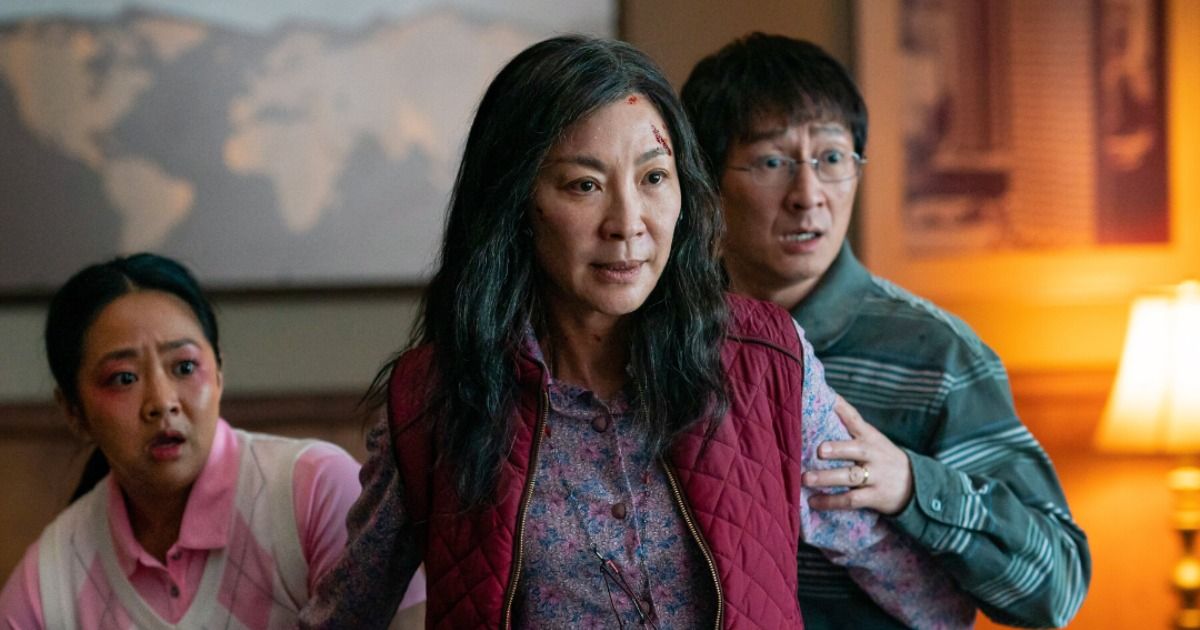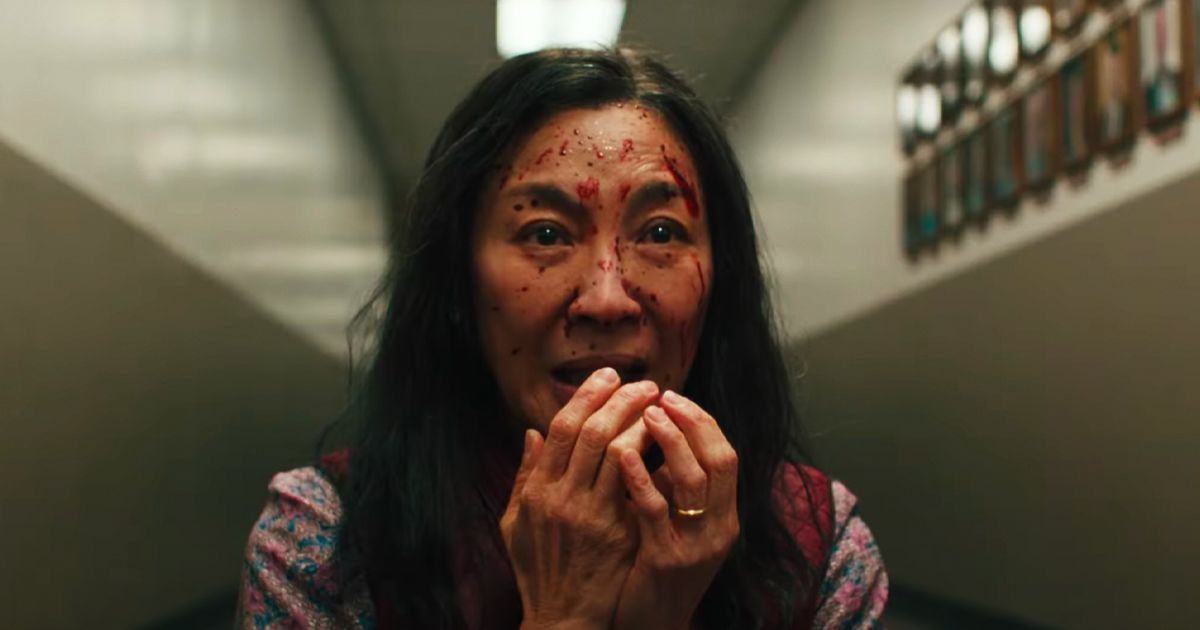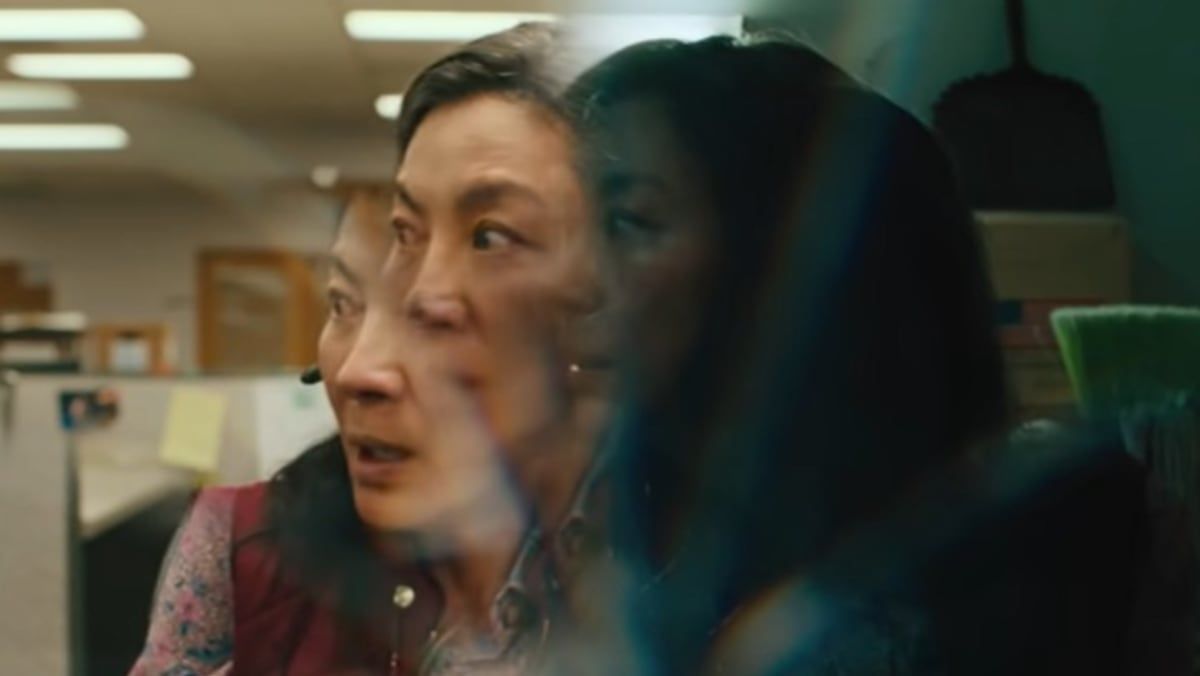While this article does not spoil any major plot points, some jokes and moments from the movie are discussed.
Dan Kwan and Daniel Scheinert, AKA the Daniels, have proven to be two of the most compelling directors working today. After only two features, they have demonstrated that they are incredibly gifted at crafting hilarious yet heartfelt stories, eliciting both laughter and tears simultaneously. Their first feature, Swiss Army Man, stars Paul Dano as a suicidal shipwreck survivor who is saved by the appearance of a corpse played by yet another Daniel, Daniel Radcliffe. With their second film, the recently released Everything Everywhere All at Once, the duo have proven yet again that they are masters at blending crude humor and impactful character drama.
Everything Everywhere All at Once stars Michelle Yeoh as Evelyn Wang, a woman who is given the task of saving the multiverse by an interdimensional version of her husband, Waymond (played by Ke Huy Quan in one of his first roles in two decades after appearing in the second Indiana Jones movie and The Goonies). Rounding out the cast are Stephanie Hsu as the couple's daughter, James Hong as Evelyn's elderly father, and Jamie Lee Curtis as a nefarious IRS inspector.
The film is a blast from start to finish, combining incredible fight choreography with hilarious jokes in a stunningly dynamic fashion, bringing to mind the master of the action-comedy, Jackie Chan. However, what makes the film truly remarkable is the family drama at its core. This blend of comedy and drama, of high and low brow, allows for some unique insight into various concepts. The Daniels have a lot to say about intergenerational dynamics, the internet, and more with this movie. As Everything Everywhere All at Once continues to delight audiences on the big screen, let's take a moment to analyze the themes this film explores.
Trauma & Love
Three generations are represented within Everything Everywhere All at Once: Evelyn Wang, her father, Gong Gong Wang, and her daughter, Joy Wang. Along with Evelyn's marriage, this familial lineage forms the movie's emotional center. In an interview with Verge, Daniel Scheinert says, "We knew that the movie was going to be about a family and that we could throw crazy ideas at the wall. But the litmus test would be like, does that complement the journey of this family?"
The film is full of wild elements like fights in which the primary weapon is a fanny pack and a universe where everyone has hot dogs for fingers. Still, the Daniels made sure to ground the absurdity with a relatable story about trauma and how it is passed on from parent to child. Gong Gong cruelly abandoned his daughter after she decided to marry Waymond, creating a permanent rift between them. Throughout the film, Evelyn constantly tries to figure out how to be a better parent to Joy than Gong Gong was to her, but she lacks a good role model.
Evelyn eventually comes across love and empathy as the best way to handle her trauma and be a better parent. Like multiverses, stories about generational trauma are very popular at the moment, but the Daniels also wanted to address the other side of the spectrum. Again speaking with Verge, Daniel Kwan says that he sees the film "as a reflection of this experience of generational trauma and generational love...[w]e tried to make an empathetic story about how hard it is for our parents’ generation to understand our generation." As the trauma flows between generations, love and empathy must be used if we are to get to a better place. It won't change the past or make the present perfect, but it's the most important step towards any sort of improvement.
Interdimensional Internet
In addition to the trauma that separates the generations, the Daniels see the internet as another divide between parents and their children. In an interview with /Film, Scheinert says the internet "exacerbated the typical generational divide" and that they "wanted the maximalism of the movie to connect with what it's like to scroll through an infinite amount of stuff," to which Kwan adds, "it's about finding each other in a very noisy world."
The emotional whiplash of going through social media and seeing a cute cat video right next to an article about the devastating effects of climate change is something the film captures wonderfully. For example, Michelle Yeoh struggling to pay attention to Jamie Lee Curtis's bureaucratic spiel about taxes while her world literally fractures and she bounces between different realities is oddly relatable, despite the high sci-fi execution. Our phones constantly informing us of everything happening everywhere is similarly overwhelming, to say the least. Many films have struggled to comment on technology and the internet without sounding out of touch, but the Daniels have skillfully reflected our current connected existence.
Everything Everywhere All at Once is the rare film that manages to be hilarious, insightful, juvenile, and deep all at the same time. The Daniels swung for the fences with their second feature, and the risks paid off enormously. It is one of the best movies to come out of American cinema in years. This article only scratches the surface of its numerous qualities and themes; one viewing isn't even enough to take it all in. The majesty of Everything Everywhere All at Once is something that has to be seen to be believed.



